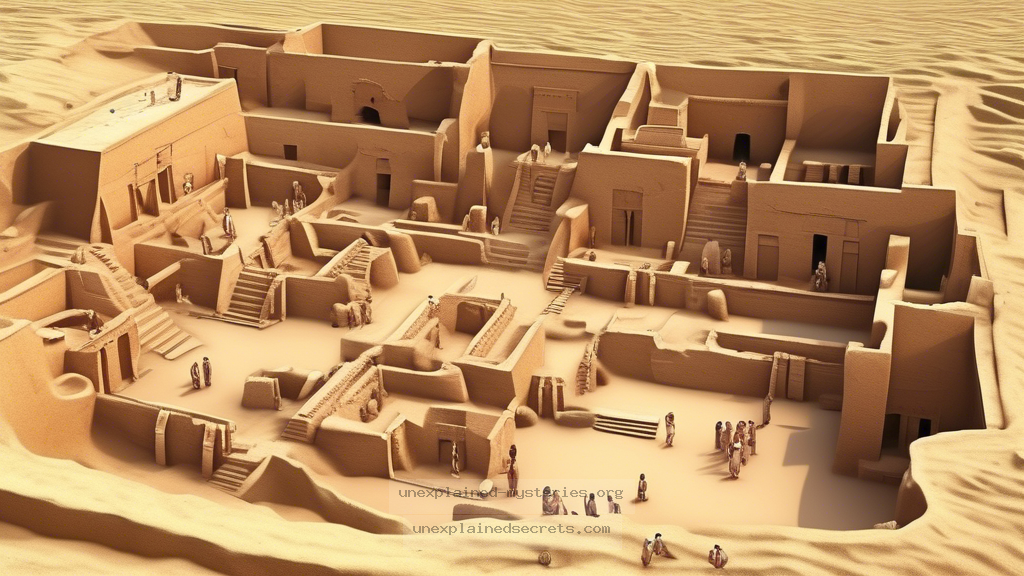What Happened to the Advanced Civilization of the Indus Valley?
What Happened to the Advanced Civilization of the Indus Valley?
The Indus Valley Civilization (IVC), one of the world’s earliest urban cultures, flourished from around 3300 BCE to 1300 BCE in what is now Pakistan and northwest India. Despite its remarkable advancements in urban planning, architecture, and social structure, the civilization experienced a mysterious decline and eventual disappearance. This question of what happened to the Indus Valley Civilization matters significantly, as it invites us to explore the complexities of ancient societies, their innovations, and their vulnerabilities. In this comprehensive exploration, we will delve into the historical context, core theories, alternative perspectives, and ongoing research related to this compelling mystery.
Historical Context of the Indus Valley Civilization
The Indus Valley Civilization was one of the three early cradles of civilization, alongside Mesopotamia and Ancient Egypt. Centered around the fertile plains of the Indus River, the IVC is known for its sophisticated urban centers like Harappa and Mohenjo-Daro, which featured advanced drainage systems, standardized weights and measures, and impressive architectural layouts. The civilization is estimated to have had a population of over five million people at its height, showcasing a well-organized society with evidence of trade, agriculture, and craftsmanship.
Despite its achievements, the IVC began to decline around 1900 BCE. Archaeological evidence suggests that urban centers were abandoned or significantly diminished in size. The reasons for this decline are still debated among historians and archaeologists, leading to a variety of theories that attempt to explain the fate of this once-thriving civilization.
Core Theories Surrounding the Decline
Researchers have proposed several theories regarding the decline of the Indus Valley Civilization. These theories can be broadly categorized into environmental, economic, and social factors.
- Environmental Changes: Some theories suggest that climatic changes, such as drought or flooding, may have severely impacted agriculture, leading to food shortages. Evidence of shifting river patterns and sedimentation has been noted in the region.
- Economic Decline: The IVC was heavily reliant on trade, particularly with Mesopotamia. Disruptions in trade routes due to political upheaval or environmental factors may have contributed to economic decline.
- Social Disintegration: Internal conflicts or social stratification may have led to the breakdown of societal cohesion, making it difficult for the civilization to withstand external pressures.
Evidence for Environmental Changes
Geological studies have revealed that the Indus River experienced significant changes over millennia, with evidence suggesting that the river’s course shifted, leading to the decline in agricultural productivity. The region is subject to monsoonal weather, and changes in monsoon patterns could have led to both flooding and drought.
Research conducted by scientists from the University of California, Santa Barbara, indicates that around 4,200 years ago, a significant arid phase began, which would have severely affected agricultural output. This transformation is supported by palynological (pollen) studies showing a decline in agricultural plants associated with the civilization.
Trade and Economic Factors
The Indus Valley Civilization was an active participant in long-distance trade, notably with Mesopotamia, exchanging goods such as textiles, beads, and agricultural products. However, evidence suggests that trade networks began to unravel around the time of the civilization’s decline.
Changes in trade patterns, possibly due to geopolitical shifts or environmental changes disrupting navigation routes, could have isolated the IVC from vital resources, leading to economic stress. Archaeologists have found that the luxury goods once abundant in IVC sites became increasingly scarce as the civilization waned. This economic downturn could have exacerbated the societal collapse.
Social Dynamics and Internal Conflicts
Some scholars argue that the complexity of the Indus Valley’s social structure may have contributed to its decline. Unlike other ancient civilizations, the IVC lacked overt signs of a centralized political authority, suggesting a more egalitarian society. However, this very structure may have made it vulnerable to internal strife.
As resources dwindled, competition for land and food could have escalated tensions among different societal groups. Archaeological evidence, such as fortifications found in some areas, indicates a potential for conflict. Additionally, the lack of weapons suggests that the society may have been more peaceful, leading to a rapid disintegration when faced with crisis.
Alternative Perspectives on the Decline
While environmental, economic, and social theories are prominent, some researchers propose alternative explanations for the decline of the IVC. One such theory suggests that the civilization did not entirely collapse but rather transformed. It is hypothesized that the people migrated to surrounding areas, contributing to the emergence of subsequent cultures, such as the Vedic culture.
Another perspective posits that the decline was gradual and multifactorial rather than a sudden collapse. The transition from urban living to more rural lifestyles may have been a response to changing conditions, allowing the remnants of the civilization to survive in altered forms.
Common Misconceptions and Clarifications
Several misconceptions about the Indus Valley Civilization persist, often due to sensationalized interpretations of archaeological findings. One common misconception is that the civilization was entirely destroyed by invaders. However, evidence of violent conflict is minimal, and many scholars argue that the decline was more about adaptation to changing circumstances than outright annihilation.
Another misconception is that the IVC was technologically inferior compared to its contemporaries. In reality, the IVC demonstrated advanced urban planning, sanitation, and metallurgy, challenging the notion that it was an unsophisticated society.
Best Practices for Investigation and Study
To deepen our understanding of the Indus Valley Civilization and its decline, researchers employ a multidisciplinary approach that combines archaeology, geology, anthropology, and climatology. Here are some best practices for studying ancient civilizations:
- Cross-Disciplinary Collaboration: Encourage collaboration among specialists in various fields to analyze data from multiple perspectives.
- Technological Innovations: Use advanced technologies such as satellite imagery and ground-penetrating radar for non-invasive exploration of archaeological sites.
- Long-Term Studies: Conduct longitudinal studies to assess changes over time and understand the context of the civilization’s rise and decline.
Future Developments and Ongoing Research
Research on the Indus Valley Civilization continues to evolve, with new archaeological discoveries shedding light on its complexities. Ongoing excavations and advancements in dating technologies promise to provide additional insights into the civilization’s timeline and interactions with neighboring cultures.
Scientists are also exploring the impact of climate change on ancient societies, drawing parallels between past and present challenges. Understanding how the IVC adapted (or failed to adapt) to environmental changes may provide valuable lessons for modern societies facing similar threats.
Conclusion
The mystery of what happened to the Indus Valley Civilization remains a captivating subject of inquiry, reflecting the complexities of human society and the many factors that can influence its trajectory. From environmental changes to economic factors and social dynamics, various theories provide a broad understanding of the civilization’s decline.
As research progresses, it is essential to approach this ancient enigma with an open mind, appreciating the sophistication of the Indus Valley while recognizing the vulnerabilities inherent in all civilizations. The lessons drawn from the IVC’s fate resonate today, reminding us of the delicate balance between human innovation and environmental stewardship.
Other Articles
What Really Happened During the 1976 Tehran UFO Incident?
Recent Posts
- What Happened to Flight MH370? The Conspiracy Theories That Still Haunt Us
- What Secrets Lurk Within the Walls of the Infamous Trans-Allegheny Lunatic Asylum?
- What Evidence Supports the Existence of Bigfoot in the Pacific Northwest?
- What Happened to the Indus Valley Civilization? Unraveling the Mysteries of Ancient Urban Life
- Can Telepathy Be Scientifically Proven Through Laboratory Evidence?







